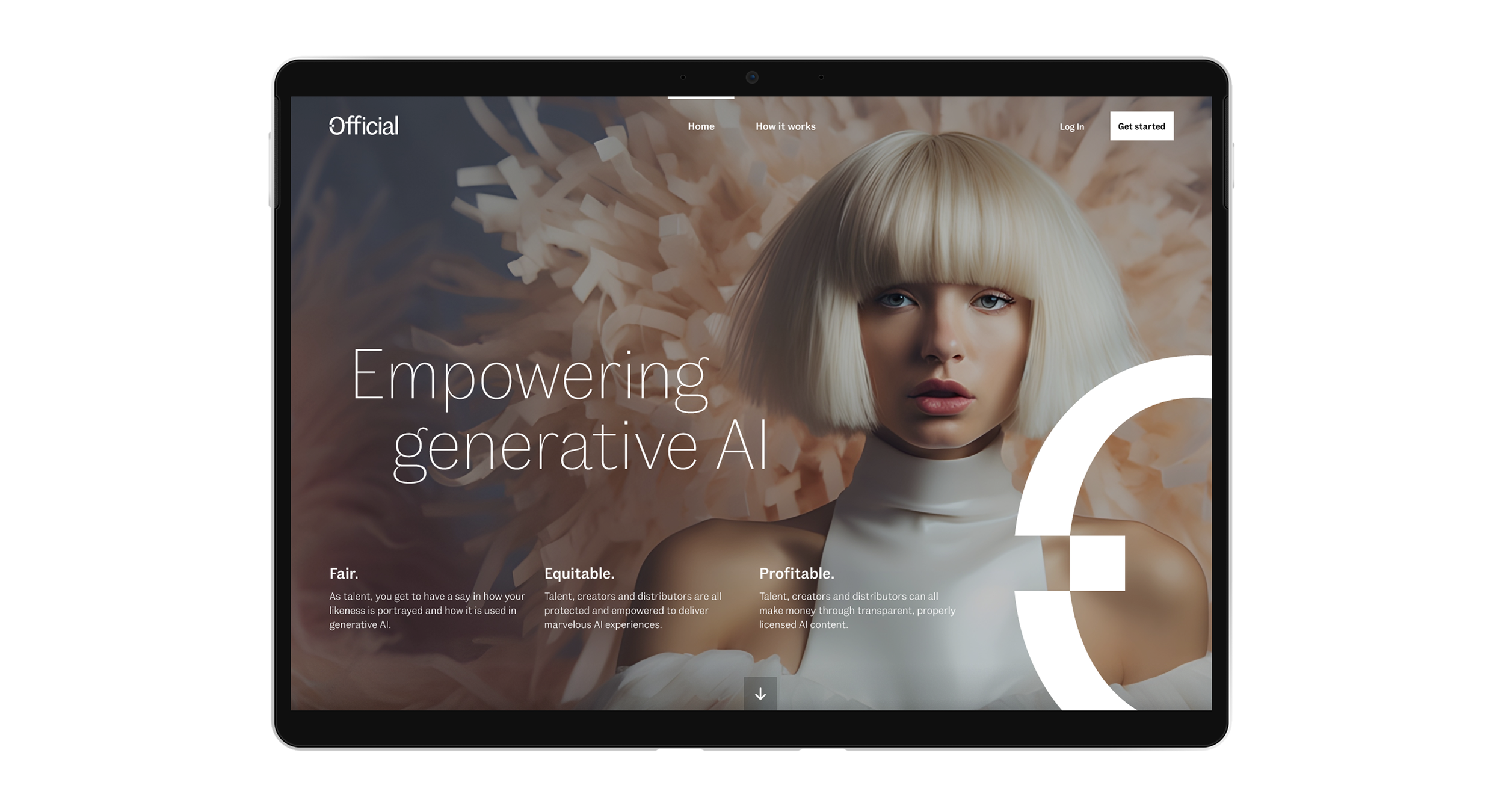

Creating meaningful experiences that leverage AI
Pioneer Square Labs is an AI-focused startup incubator that pairs founders, big ideas, investment capital, and teams that bring vision into reality. My role was working with founding teams to conceptualize, validate and incubate new products with AI at the core. I worked on 5 projects during my time there: 4 vertical AI products, and one focused on licensing generative AI content.
Official
Project type Envisioning + initial product direction
Timeline 3 weeks
My role Design + prototyping
Collaborating with the founders
The Challenge
Enable generative AI content to flourish fairly, equitably and profitably.
Generative AI is revolutionizing content creation, but legal and ethical uncertainties around likeness rights create roadblocks for talent, creators, and businesses. Unauthorized use leads to disputes, takedowns, and lost revenue opportunities.
Official is the licensing authority that brings clarity and fairness to AI-generated content. Talent can define and monetize their AI likeness, content creators can legally license celebrities and influencers, distributors can verify compliance instantly, and marketers can generate AI-driven campaigns with confidence.
Typically, I take a user-centered design approach to the projects I work on, but with this project, I was working on it very early stage, and the objective was to visualize the initial idea the founders had in mind, in order to validate the concept. I worked closely with the founding team to map out how a flow might work from the perspective of the person or organization licensing the content, as well as from the talent or managing agency. I created the images of the celebrities used in the mockups in Midjourney, and the irony was not lost on us.
the demo
This demo shows how Official could be used by a marketing agency to license and publish a video ad with AI generated content.
Content creators can browse talent that is registered with Official, they can filter based on their criteria, search for someone specific, or go through a guided flow to help them narrow down to talent that will be a good fit for their needs.
In this case, the content creator is making a YouTube ad and they want to feature a musician. Sia looks like a perfect fit. The content creator can look through the details that the talent or the talent agency has provided, including the commercial terms and the cost for licensing.
They can download training data directly through Official if the talent has provided it. Wherever they get their data from, the content creator can then create their content in whichever external tool they want to use. Once the content has been created, in this case the video ad, they can upload that content and apply for a license.
Once the content has been submitted for review, the talent, or talent agency receives the license request. Official uses its AI models to flag sections that are potentially non-compliant with the talent’s brand guidelines.
The talent agency can approve the content, reject it, or choose to send it back to the creator with revisions request. Once the content is shared on the web, the talent agency can see where the content has been distributed, stats on its popularity, and they have additional actions available to them like revoking the license. They will also get notifications when creators violate a license or content that was rejected, such as uploading a rejected submission to YouTube.
The content creator can now see that the talent agency has sent the content back for revisions. They can tap into it to find out what revisions are needed, update the content, and resubmit it. Once approved, They can download the licensed, fingerprinted version of the content as well as the license token and distribute it legally on whichever platform they choose.
Explore the prototype

